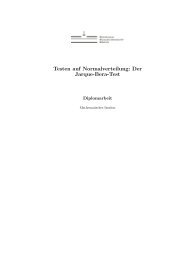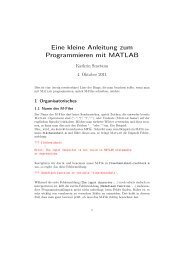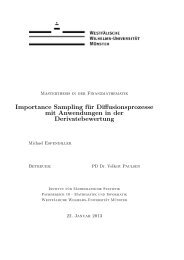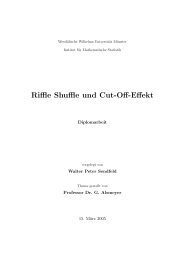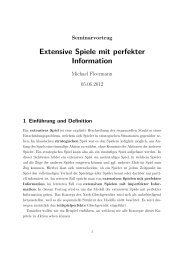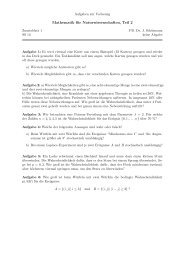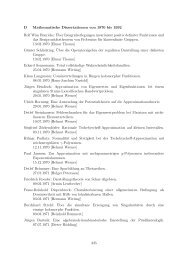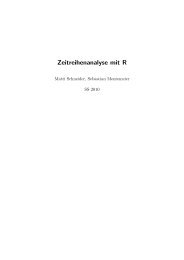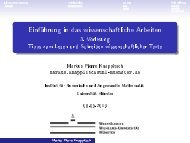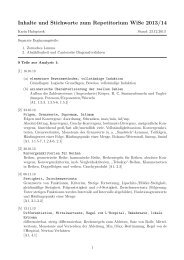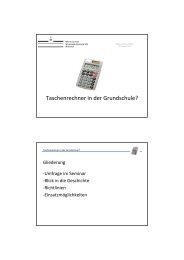Margulis Lemma
Margulis Lemma
Margulis Lemma
Create successful ePaper yourself
Turn your PDF publications into a flip-book with our unique Google optimized e-Paper software.
10 VITALI KAPOVITCH AND BURKHARD WILKING<br />
<strong>Lemma</strong> 2.2. Suppose a sequence of complete inner metric spaces (Y i , p i ) converges<br />
to a locally compact metric space (Y ∞ , p ∞ ). Suppose G i acts isometrically on Y i and<br />
that the action of G i converges to an action of a closed subgroup G ∞ ⊂ Iso(Y ∞ ).<br />
Let G i (ε) denote the subgroup generated by those elements that displace p i by at<br />
most ε, i ∈ N ∪ {∞}. Suppose G ∞ (ε) = G ∞ ( a+b<br />
2<br />
Then there is some sequence ε i<br />
(a + ε i , b − ε i ).<br />
) for all ε ∈ (a, b) and 0 ≤ a < b.<br />
) for all ε ∈<br />
→ 0 such that G i (ε) = G i ( a+b<br />
2<br />
Proof. Suppose on the contrary we can find g i ∈ G i (ε 2 ) \ G i (ε 1 ) for fixed ε 1 < ε 2 ∈<br />
(a, b). Without loss of generality d(p i , g i p i ) ≤ ε 2 .<br />
Because of g i ∉ G i (ε 1 ) it follows that for any finite sequence of points p i =<br />
x 1 , . . . , x h = g i p i ∈ G i ⋆ p i there is one j with d(x j , x j+1 ) ≥ ε 1 . Clearly this<br />
property carries over to the limit and implies that g ∞ ∈ G ∞ (ε 2 ) is not contained<br />
in G((ε 1 + a)/2) – a contradiction.<br />
□<br />
<strong>Lemma</strong> 2.3. Suppose (Mi n, q i) converges to (R k × K, q ∞ ) where Ric Mi ≥ −1/i<br />
and K is compact. Assume the action of π 1 (M i ) on the universal cover ( ˜M i , ˜q i )<br />
converges to a limit action of a group G on some limit space (Y, ˜q ∞ ).<br />
Then G(r) = G(r ′ ) for all r, r ′ > 2 diam(K).<br />
Proof. Since Y/G is isometric to R k ×K, it follows that there is a submetry σ : Y →<br />
R k . It is immediate from the splitting theorem that this submetry has to be linear,<br />
that is, for any geodesic c in Y the curve σ◦c is affine linear. Hence we get a splitting<br />
Y = R k × Z such that G acts trivially on R k and on Z with compact quotient K.<br />
We may think of ˜q ∞ as a point in Z. For g ∈ G consider a mid point x ∈ Z of<br />
˜q ∞ and g˜q ∞ . Because Z/G = K we can find g 2 ∈ G with d(g 2˜q ∞ , x) ≤ diam(K).<br />
Clearly<br />
d(˜q ∞ , g 2˜q ∞ ) ≤ 1 2 d(˜q ∞, g˜q ∞ ) + diam(K)<br />
d(˜q ∞ , g −1<br />
2 g˜q ∞) = d(g 2˜q ∞ , g˜q ∞ ) ≤ 1 2 d(˜q ∞, g˜q ∞ ) + diam(K).<br />
This proves G(r) ⊂ G ( r/2 + diam(K) ) and the lemma follows.<br />
<strong>Lemma</strong> 2.4 (Gap <strong>Lemma</strong>). Suppose we have a sequence of manifolds (M i , p i ) with<br />
a lower Ricci curvature bound converging to some limit space (X, p ∞ ) and suppose<br />
that the limit point p ∞ is regular. Then there is a sequence ε i → 0 and a number<br />
δ > 0 such that the following holds. If γ 1 , . . . , γ li is a short basis of π 1 (M i , p i ) then<br />
either |γ j | ≥ δ or |γ j | < ε i .<br />
Moreover, if the action of π 1 (M i ) on the universal cover ( ˜M i , ˜p i ) converges to<br />
an action of the limit group G on (Y, ˜p ∞ ), then the orbit G ⋆ ˜p ∞ is locally path<br />
connected.<br />
Proof. That the orbit is locally path connected is a consequence of the following<br />
Claim. There is a δ > 0 such that for all points x ∈ G ⋆ ˜p ∞ with d(˜p ∞ , p) < δ we<br />
can find y ∈ G ⋆ ˜p ∞ with max{d(˜p ∞ , y), d(y, x)} ≤ 0.51 · d(˜p ∞ , x).<br />
To prove the claim we argue by contradiction and assume that for some δ h > 0<br />
converging to 0 we can find g h ∈ G with d(g h ˜p ∞ , ˜p ∞ ) = δ h such that for all a ∈ G<br />
with d(a˜p ∞ , ˜p ∞ ) ≤ 0.51δ h we have d(a˜p ∞ , g˜p ∞ ) > 0.51δ h .<br />
After passing to a subsequence we can assume that ( 1<br />
δ h<br />
Y, ˜p ∞ ) converges to a<br />
tangent cone (C p∞ Y, o) and that the action of G on 1<br />
δ h<br />
Y converges to an action of<br />
□



